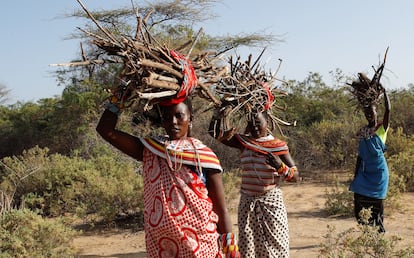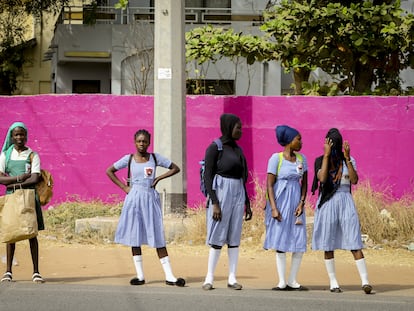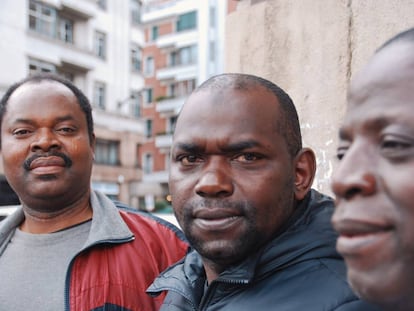UNICEF: 230 million females are circumcised globally, 30 million more than in 2016
The report, released on International Women’s Day. The practice, incorrectly believed to control women’s sexuality, can cause serious bleeding and even death. Girls are subjected to the procedure at ages ranging from infancy to adolescence

Over 230 million women and girls have undergone female genital mutilation, most of whom live in Africa, according to a report issued on Friday by the United Nations children’s agency.
In the last eight years, some 30 million people have undergone the procedure, in which external genitalia are partially or fully removed, UNICEF estimated in the report, which was released on International Women’s Day.
The percentage of women and girls who experience female genital mutilation is declining, UNICEF said, but it warned that efforts to eradicate the practice are too slow to keep up with fast-growing populations.
“The practice of female genital mutilation is declining, but not fast enough,” the report said.
The practice, incorrectly believed to control women’s sexuality, can cause serious bleeding and even death. Girls are subjected to the procedure at ages ranging from infancy to adolescence. Long term, it can lead to urinary tract infections, menstrual problems, pain, decreased sexual satisfaction and childbirth complications, as well as depression, low self-esteem and post-traumatic stress disorder.
“We’re also seeing a worrying trend that more girls are subjected to the practice at younger ages, many before their fifth birthday. That further reduces the window to intervene,” said UNICEF Executive Director Catherine Russell.
Some 144 million women and girls have been through female genital mutilation in Africa alone, followed by Asia and the Middle East with 80 million and 6 million respectively, the report said. Somalia tops the list of countries where the practice, also known as female circumcision, is prevalent, with 99% of the female population between the ages of 15 and 49 having been circumcised.
Burkina Faso made the most significant progress, reducing the proportion of women between 15 and 49 who were circumcised from 80% to 30% over three decades.
The report also showed that 4 in every 10 survivors live in conflict-torn countries with high population growth rates, adding that political instability disrupts efforts prevent the practice and provide support to victims.
“Ethiopia, Nigeria and Sudan account for the largest numbers of girls and women who have undergone female genital mutilation in conflict-affected countries,” the report said.
Although the report hailed the progress made in some countries, it warned that the world is falling short of what would be needed to meet the U.N.’s goal of eradicating the practice globally by 2030.
“In some countries, progress would need to be 10 times faster than the best progress observed in history in order to reach the target by 2030,” said the report.
Nimco Ali, CEO of the Five Foundation, a UK-based charity that fights female genital mutilation, said the UNICEF estimates were “shocking” and “devastating,” and more funding is urgently needed to end the practice.
“We must use the last six years of this decade to finally get to grips with this abhorrent abuse of a girl’s human rights and save the next generation from the horrors of FGM,” the Somali-born activist, author and female genital mutilation survivor said in a press release.
Sign up for our weekly newsletter to get more English-language news coverage from EL PAÍS USA Edition
Tu suscripción se está usando en otro dispositivo
¿Quieres añadir otro usuario a tu suscripción?
Si continúas leyendo en este dispositivo, no se podrá leer en el otro.
FlechaTu suscripción se está usando en otro dispositivo y solo puedes acceder a EL PAÍS desde un dispositivo a la vez.
Si quieres compartir tu cuenta, cambia tu suscripción a la modalidad Premium, así podrás añadir otro usuario. Cada uno accederá con su propia cuenta de email, lo que os permitirá personalizar vuestra experiencia en EL PAÍS.
¿Tienes una suscripción de empresa? Accede aquí para contratar más cuentas.
En el caso de no saber quién está usando tu cuenta, te recomendamos cambiar tu contraseña aquí.
Si decides continuar compartiendo tu cuenta, este mensaje se mostrará en tu dispositivo y en el de la otra persona que está usando tu cuenta de forma indefinida, afectando a tu experiencia de lectura. Puedes consultar aquí los términos y condiciones de la suscripción digital.
More information
Archived In
Últimas noticias
Most viewed
- Sinaloa Cartel war is taking its toll on Los Chapitos
- Oona Chaplin: ‘I told James Cameron that I was living in a treehouse and starting a permaculture project with a friend’
- Reinhard Genzel, Nobel laureate in physics: ‘One-minute videos will never give you the truth’
- Why the price of coffee has skyrocketed: from Brazilian plantations to specialty coffee houses
- Silver prices are going crazy: This is what’s fueling the rally










































